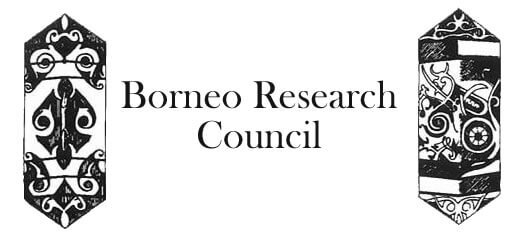A Study of Brunei Dunsun Religion: Ethnic Priesthood on a Frontier of Islam
By Eva Maria Kershaw
The monograph's subtitle highlights the most dynamic factor for the decline of the minority religion studied: The urge for cultural hegemony on the part of the Malay-dominated, Muslim state of Brunei. But the main, moral justification for the study is simply the fact of its decline and impending disappearance, attributable to many factors apart from state imperatives. Urbanization, the decline of rice cultivation, and the redundancy of traditional healing are all relevant. Each factor impinges directly and damagingly on the role of the religious practitioner and repository: the female belian.
At a theoretical level the author relates the belian role to recent discussions of shamanism, and favors an eclectic classification not only of shaman, but medium and priest. At an interpretative level, the study deals with different manifestations of the unseen, from the Dusun Creator, through demons, to derato the defining "companion" of the belian during rituals. Empirically, the monograph offers extensive description of the training and behavior of the belian, as well as the varieties of temarok ritual, and a minute-by-minute record of two performances. Such description depends on close observation as the belian are not able, or certainly not allowed, to talk about their experience as conduits of divine presence.
Hardback
ISBN 1-929900-01-5
2000
Discounted shipping rates for large orders are possible if an order is placed via email at brc@borneoresearchcouncil.org.
About the Author
The author was born Eva Maria Linder, a native of South Germany. She married Roger Kershaw, a British history teacher (later, Lecturer in Politics and Southeast Asian Studies), when both were in their early twenties. Her direct experience of Southeast Asia relates, like his, largely to Kelantan, Bangkok and Brunei, but she has developed her own intellectual interests as opportunity arose, starting with a household expenditure survey in the Thai village of Semerak, Kelantan. In the 1970s she took Khmer as Subsidiary Subject when majoring in German at London University. She then enrolled for graduate studies, specializing in Middle High German and the political and social thought of Hans Sachs. At Chulalongkorn University in 1978 she was involved in designing German languages courses for Thai high school students and undergraduates. More recent years have seen the intensive study of the Dusun (Bisaya) language of Brunei, especially its oral literature (represented in the collection Dusun Folktales, University of Hawai'i at Manoa, 1994). The research on Dusun religion presented in this monograph evolved alongside the linguistic and literary activity-both interests benefiting from nine years of residence in Brunei. The monograph was written in Scotland, where the author and her husband have now settled and are restoring a croft.
Table of Contents
Preface
Introduction: A Comparative Reflection
A Demographic and Sociological Context
How Dusuns Conceive the Universe and Their Place in it
The Concept of Self: The Creation Myth
The Non-Divine, Terrestrial Spirits
The Divine Spirits
The Ritual and Social Significance of Crocodile and Snake
The Dukun: Healer, Oracle, and General Magical Specialist
The Belian and her Office
Temarok: Its Milieu, Meaning, and Manifestations
Changing Relations with Islam
Conclusion. The Force of Change
Appendix: Detailed Descriptions of Sundry Rituals
Glossary One. Dusun Words Found in the Text
Glossary Two. A Short List of Belian Vocabulary
Bibliography
Index

